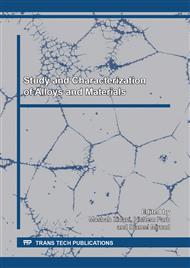p.1
p.8
p.13
p.24
p.39
p.51
p.59
p.69
Strengthening of Damaged Metallic Structures: A New Numerical Model for Interfacial Stresses Analysis
Abstract:
Bonded fibre reinforced polymers (FRP) have been found to be an efficient method for improving the lifespan of fatigued metallic structures and have attracted much research attention. Steel beams can be reinforced in flexure using FRP plates that rely on adhesively bond. In such plated structures, shear forces are developed in the bonded joint and these will be transferred to FRP plate via the adhesion technique, thus, the interfacial stresses will progress consequently, and the debonding may occurs at the plate ends due to high values of interfacial stresses. This original research leads us to predict the interfacial stresses by a numerical study, using a finite element model under ANSYS software and coupling effects of mechanical and thermal loads with fibre orientation. Finally, a parametric analysis is used to identify effects of various geometrical and material properties on the magnitude of stresses values. This analysis is helpful because of the adaptation in the modelling process. It is shown that the bearing capacity of the adhesive joint is significantly influenced not only by the strength model, but also, by the shear modulus, elastic modulus of FRP and the other parameters..
Info:
Periodical:
Pages:
13-23
Citation:
Online since:
September 2019
Price:
Сopyright:
© 2019 Trans Tech Publications Ltd. All Rights Reserved
Share:
Citation:


